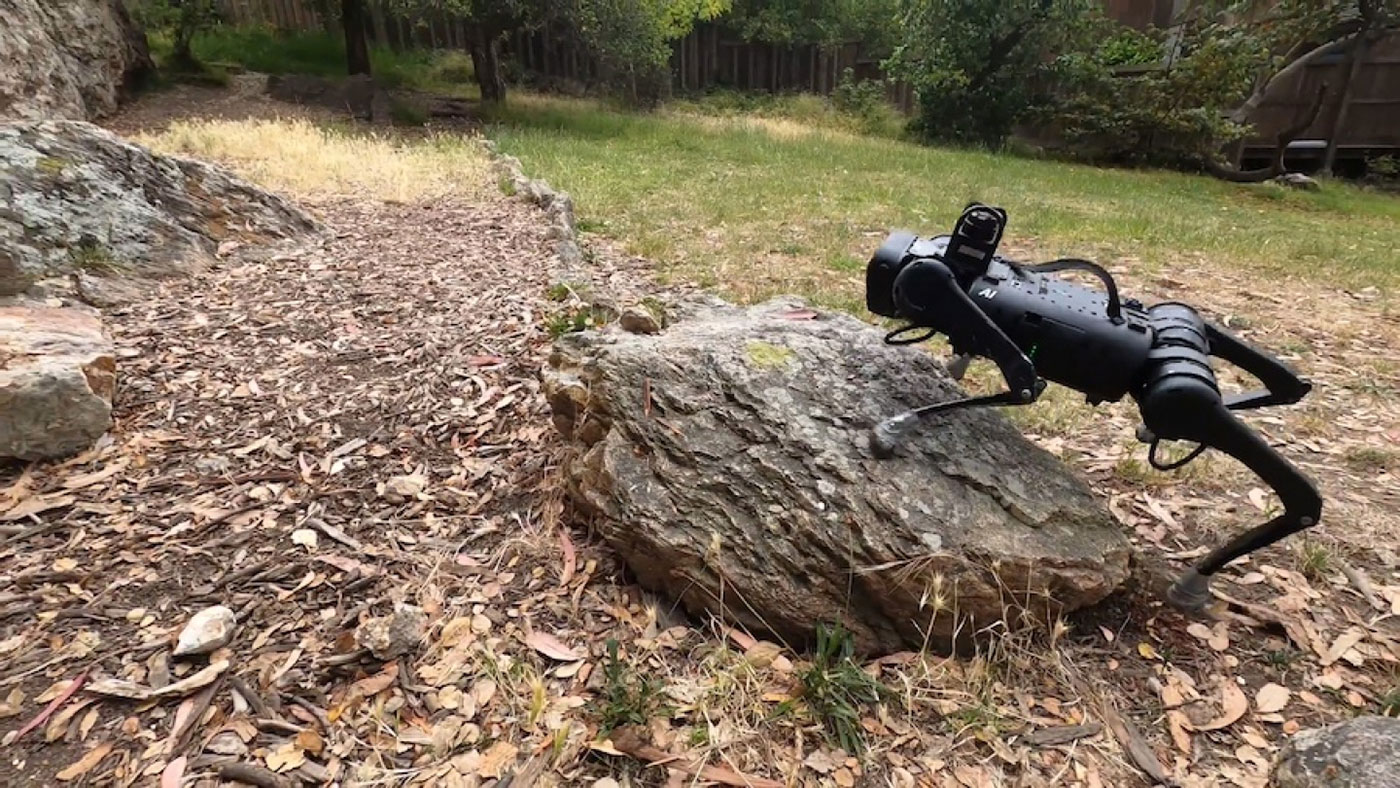
Researchers at Carnegie Mellon University’s School of Computer Science and the University of California, Berkeley, have designed a robotic system that enables a low-cost and relatively small-legged robot to climb and descend stairs nearly its height; traverse rocky, slippery, uneven, steep, and varied terrain; walk across gaps; scale rocks and curbs; and even operate in the dark.
Most robotics systems use cameras to create a map of the surrounding environment and use that map to plan movements before executing them. This process is slow and often fails due to inaccuracies or incorrect settings during the mapping phase, which affects the planning and subsequent movement of the robot. Motion mapping and planning are useful in high-level control-oriented systems, but they aren’t always suitable for the dynamic requirements of low-level skills like walking or running over challenging terrains.
Rather than using cameras to view the environment and map the area, the team trained the robots with 4,000 clones of it in a simulator, where they practiced walking and climbing on challenging terrain. Through the use of simulation, the robot gained skills in just one day that would normally take six years to master. The data collected in the simulations were then fed into a neural network and uploaded to the robot.
The new system bypasses the mapping and planning phases and sends visual information directly to the robot’s control units. The robot moves based on what it “sees” in front of it. This technology allows the robot to respond quickly to changes in terrain and move with ease.
With onboard learning, the system can react to its environment in real-time and adjust its legs accordingly. Because there is no mapping or planning involved and movements are trained using machine learning, the robot dog itself can be low-cost. The robot the team used was at least 25 times cheaper than the available alternatives. The team’s algorithm has the potential to make low-cost robots much more widely available.
“This system uses vision and feedback from the body directly as input to output commands to the robot’s motors,” said Ananye Agarwal, an SCS Ph.D. student in machine learning. “This technique allows the system to be very robust in the real world. If it slips on the stairs, it can recover. It can go into unknown environments and adapt.”
In addition to being able to climb stairs almost to its own height, the system can also operate in the dark, although the vision system is still required to improve performance.
This low-cost robotic dog can walk on almost any terrain
Source: Tambay News

0 Comments